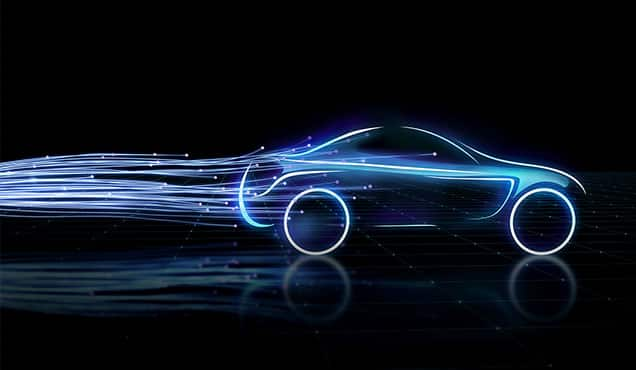Fuel For Thought: The dynamics of EV charging and its impacts on the broader electrification of mobility

Automotive Every month Newsletter and Podcast
The dynamics of EV charging and its impacts on the broader
electrification of mobility
The automotive electrification outlook is an amalgamation of
numerous intertwined components from vehicle technologies and
infrastructure availability to purchaser sentiments and OEM
partnerships. Many propose this to be a “rooster-and-egg” paradox,
whilst S&P World wide Mobility analysts imagine the auto
(demand aspect) and charging stations (provide side) can be, and will
be, created and deployed largely at the same time. While there
will be momentary shifts towards an oversupply of autos or an
extra desire for charging, in the extensive operate an equilibrium will
emerge in most markets globally.
Trends on charging demand and station source in the
North American sector
By now, most OEMs have established their plans and aspirations for
partial or total battery-electric powered auto (BEV) generation,
ranging any place from 2030 by 2050. Although the month-to-month BEV
output figures go on to develop globally, electric automobiles in
operation (E-VIO) is an vital metric when considering charging
infrastructure preparing. In 2021, S&P World wide Mobility analysts
estimate 2.2 million BEVs and plug-in hybrid electric powered motor vehicles
(PHEVs) are on the street in the US industry. By 2030, this quantity
ought to grow to 32 million.
If we split this range down a minor bit, there are some
appealing trends pertaining to US condition distribution. In 2021,
California created up 39.2% of all BEVs and PHEVs in operation, but by
2030, their dominance will drop to only 21. % of the US marketplace
E-VIO. States such as Texas, Florida, New York, and New Jersey increase
dramatically, to account for more than 25% of the nationwide VIO
mixed.
On top of that, the Mountain and Midwest states in the center of
the region proceed to appeal to additional BEV and PHEV adoption by means of
both new automobile gross sales as perfectly as “importing” these utilised cars from
the coastal states to the inside. In fact, this is producing a
phenomenon the place some US States have negative scrappage charges. This
implies, much more electric autos (EVs) are currently being registered than new
EV income, accounting for an influx of utilized autos into the state
E-VIO. This not only puts a strain on OEMs to meet the requires for
BEVs and PHEVs nationwide, but also requires charging
infrastructure builders to boost their concentrate the place charging
desire is expanding quickest.
S&P World Mobility can also crack these figures down to
every condition and even significant metropolitan area in the US. This neighborhood
perspective is vital simply because charging is set up and applied on a regional
basis extra so than a condition or countrywide perspective. Cities these types of as
Detroit, Michigan, US are presently managing with charging
infrastructure congestion, but Dallas-Fort Worth is struggling to
hold up with the rising E-VIO needs, and the two towns will
practical experience alterations to their equilibrium more than the next 8 yrs
as EV profits keep on to improve.
Charging know-how needs
Transferring into charging technologies, it is important to describe
how each technologies has its distinctive role. Although AC charging is and
will be the most favored form of charging, to tackle variety
stress and quicker charging, automakers have been looking at
high-voltage architectures. The 800V architecture provides
considerable advantages in terms of more rapidly charging, compact and
light-weight wirings, improved efficiency and efficiency, and
greater electrical power regeneration throughout braking. This new pattern will
enable charging premiums as high as 350 kW and further minimize the
charging time to fewer than 20 minutes.
S&P International Mobility analysts forecast the creation of BEVs
with technique voltage greater than or equal to 800V will improve at a
large 56% compound annual progress level (CAGR) to about 2.5 million
models in 2030, remaining a niche software during 2020-30. This
expansion will largely be attributed to mild business motor vehicles and
pickup vehicles that attribute battery capacities bigger than 100 kWh
or specific high quality cars such as Porsche Taycan. These motor vehicles
will demand EV charging infrastructure that supports charging at
800V.
All round, about 40% of the BEVs made in 2021 were able
of peak DC charging earlier mentioned 100 kW. In the short-to-medium phrase,
notion of motor vehicle charging functionality will problem consumer
acceptance of EVs till vehicle know-how catches up with
overall performance improvements on the infrastructure aspect. S&P World
Mobility analysts forecast 150 kW to be the most consistently deployed
speedy-charging amount till 2025, and about 50% of the BEV creation
in 2030 will be capable to charge at or about 200 kW.
Charging Infrastructure deployment
By the stop of 2021, there had been close to 4.3 million cumulative AC
charging stations deployed globally, and this need to improve
exponentially to additional than 65 million units by 2030, a 31% CAGR.
Likewise, there are all around 200,000 cumulative DC charging stations
deployed globally, which will quadruple to a lot more than 1 million
models by 2030. Of the AC charging stations deployed globally, far more
than 80% are domestic charging stations set up in people’s
properties, and S&P World-wide Mobility analysts assume the development to
keep on.
The sort and locale of EV charging infrastructure differs
across important areas. The Increased China and European region are
leading in phrases of xEV deployment and EV charging infrastructure
deployment. Today, roughly 21% of the global AC charging
stations and much more than 60% of the worldwide DC fast charging stations
are concentrated in the Bigger China location.
OEMs partnering with charging players
In the desire of advancing adoption of BEVs, mainstream
automakers are partnering with charging stage operators (CPOs) to
subsidize an first support for new EV owners who are unfamiliar
and nervous about charging their automobiles. As this kind of, OEM and CPO
associate systems have emerged to offer special discounts or cost-free charging
for a partial time frame. In the US, Electrify The us has
agreements with Audi, BMW, Ford, Hyundai, Kia, Lucid,
Mercedes-Benz, Polestar, Porsche, Volkswagen and Volvo. EVgo has
current agreements with Chevrolet, Nissan, and Toyota, whilst
ChargePoint has an settlement with Mazda.
OEM and CPO agreements are also prevalent in Europe and Asia,
exactly where the want exists. For instance, Ionity – a cross-sector
joint-venture (JV) of BMW, Ford, Hyundai, Mercedes-Benz, and
Volkswagen Group such as Audi, Porsche and VW – just lately
introduced at VW’s Electrical power Day, that it would collaborate with Enel X,
Iberdrola and BP to fill the demand from customers of its users’ infrastructure
desires.
Start out-up landscape on charging models
Although the EV charging infrastructure industry is mostly driven by
established corporations quickly deploying equally AC and DC charging
stations, numerous distinctive company models and charging systems
are getting into the industry. Businesses may possibly favor to aim on just
production electric powered car supply products (EVSE), giving
just community and cloud-linked expert services, or just operating the
charging station without having proudly owning the tools amid others. Also,
some companies only focus on community DC rapid charging equipment
installations, when many others could choose for a combined solution to fit
greater shopper demands.
When S&P Global Mobility analysts assume wi-fi charging
and battery swapping to be a smaller sized subset of the overall battery
charging ecosystem, the technology is maturing and the deployment
of such unique battery charging systems is escalating. US-dependent
startup Enough has produced it apparent that standardization of battery
packs amid EVs can be valuable for EV fleet homeowners. Nio, just one of
mainland China’s major EV startups, has been a pioneer in the
battery-swapping ecosystem, with extra than 8 million battery swaps
at much more than 900 battery-swapping stations in mainland China.
Some special startups such as Elonroad are putting in a particular
wired charging technique that fees autos whilst they are getting
driven, transferring vitality making use of a special setup below the car or truck
that is in get in touch with with the charging strip on highway. Such exceptional
concepts really should more increase client sentiments toward EV charging
and increase EV adoption, while powerful field inertia is
flowing towards conventional charging models.
Buyer survey – key inner thoughts of the shoppers
toward charging
The S&P World E-Mobility buyer sentiments survey observed
that, although looking into in which EV house owners routinely demand their
cars, only 5% of respondents answered that they cost EVs when
parked in a public/semi-general public place though they are engaged in
leisure or similar searching things to do the wide majority, about
56%, of respondents stated that they like to cost possibly at household
or get the job done. These types of a huge variance in charging styles implies
that EV charging habits have but to be entirely integrated into our
lives.
While OEMs, utilities, startups, and founded charging
infrastructure corporations race towards a single a further to capture a more substantial
share of the speedily developing EV charging marketplace, globally, far more
than 37% of respondents advised that the general public charging
infrastructure is insufficient for their charging demands. Whilst
these types of a notion is remarkably various amongst locations -these as
in mainland China in which EV homeowners depend on public charging
infrastructure for plan charging compared to regions wherever a
devoted parking place in a residence will allow EV proprietors to cost at
household, generating them oblivious to the general public charging infrastructure.
Only 11% of EV proprietors in mainland China stated that general public charging
infrastructure is inadequate, in contrast to close to 40% of EV homeowners
in Germany and the Uk.
Conclusion
As the marketplace moves at any time forward with electrification
procedures and technologies, major markets globally will see an
upending of the standing quo. An incumbent demand from customers for charging will
emerge and have an impact on organizations, the cities’ landscape, and even our
individual driving experience. New infrastructure and new engineering
will start out showing in our life with the goal of minimizing the
stress of the new form of mobility, even though also making it possible for a smoother
transition toward the new refueling system.
What is important to don’t forget is that in this probably decade-prolonged
changeover, the nearby impacts will be felt as strongly or stronger
than the countrywide types. A national or point out plan may well generate the
adoption of EVs or charging stations as a result of grants, rebates or
other incentives, but the transition to a cleanse mobility fleet will
take place 1 motor vehicle at a time, and a person charging station at a time in
the neighborhoods and garages all around the entire world.
_______________________________
Dive Deeper:
EV Charging Infrastructure: How
lots of charging points are needed and in which? – Master Extra
Battery demand from customers, know-how
progress & provide chain evolution – Find out More
Average age of autos in the US
boosts to 12.2 decades – Read through THE Report
Webinar Replay: World EV Charging Outlook – View NOW
Request the qualified a question – Mark
Boyadjis
Inquire the qualified a dilemma – Claudio
Vittori




This article was printed by S&P Global Mobility and not by S&P Global Ratings, which is a individually managed division of S&P World.



